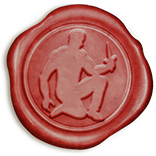
Cover vs. Concealment: Cover can block or obstruct an attack, while concealment makes a target difficult to see for an attack.
Walls, trees, creatures, and other obstacles can provide cover during combat, making a target more difficult to harm. A target can benefit from cover only when an attack or other effect originates on the opposite side of the cover.
| Cover | |
|---|---|
| Half Half | : +2 AC and Dex savesDetails |
| A target has half cover if an obstacle blocks at least half of its body. The obstacle might be a low wall, a large piece of furniture, a narrow tree trunk, or a creature, whether that creature is an enemy or a friend. | |
| Three-Quarters Three-Quarters | : +5 AC and Dex savesDetails |
| A target has three-quarters cover if about three-quarters of it is covered by an obstacle. The obstacle might be a portcullis, an arrow slit, or a thick tree trunk. | |
| Total Cover Total Cover | : Cant be targetedDetails |
| A target has total cover if it is completely concealed by an obstacle. For example, if the target is standing behind a wall or boulder. | |
If a target is difficult to see, it is concealed to a certain degree. This can be the result of lighting, weather, smoke and special abilities (i.e. invisibility).
| Concealment | |
|---|---|
| Lightly Obscured Lightly Obscured | : Disadvantage on Wisdom (Perception)Details |
| Dim light, light fog, light foliage, heavy rain/snow | |
| Heavily Obscured Heavily Obscured | : Blocks vision entirelyDetails |
| Heavy smoke/fog, thick foliage, complete darkness, or invisible | |